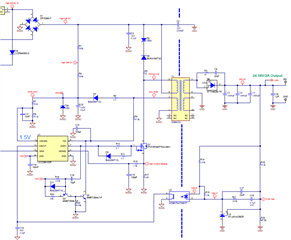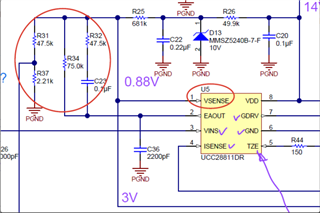Other Parts Discussed in Thread: UCC28810, , TIDA-010951
Tool/software:
I want to develop 56 Watt singe stage PFC LED driver using UCC28810.
I come across Two designs, PMP6024 & "TIDA-010951" in both designs UCC28810/11 part used for inge stage PFC LED driver.
But control circuit of TIDA-010951 is much simpler than PMP6024.
I have few quesries on below designs.
Query : 1
Why here used Mosfet based startup, why can't we go for standard Resistor devider based startup given in the "TIDA-010951"
Which option is prepferable? Also Why Q5 in the "PMP6024" design is ground through D12?
Query: 2
Need to understand the significance of below circuit.

Query : 3
If dimming is not use still this circuit of D18, D16, U4 &D19 is needed? Need to understand the significance of below circuit.

Can we go with the simple option like TIDA-010951 mention below.





